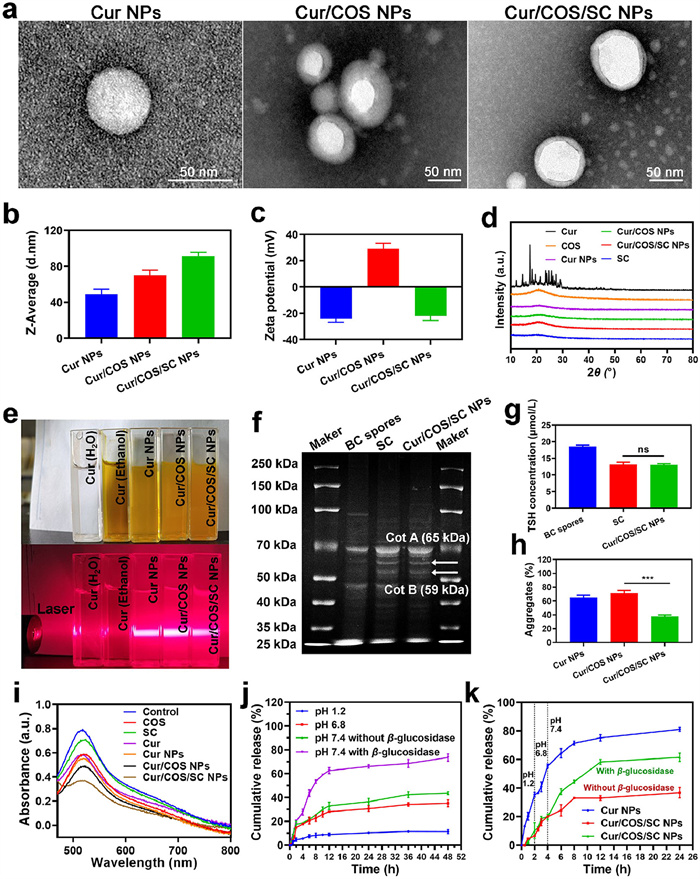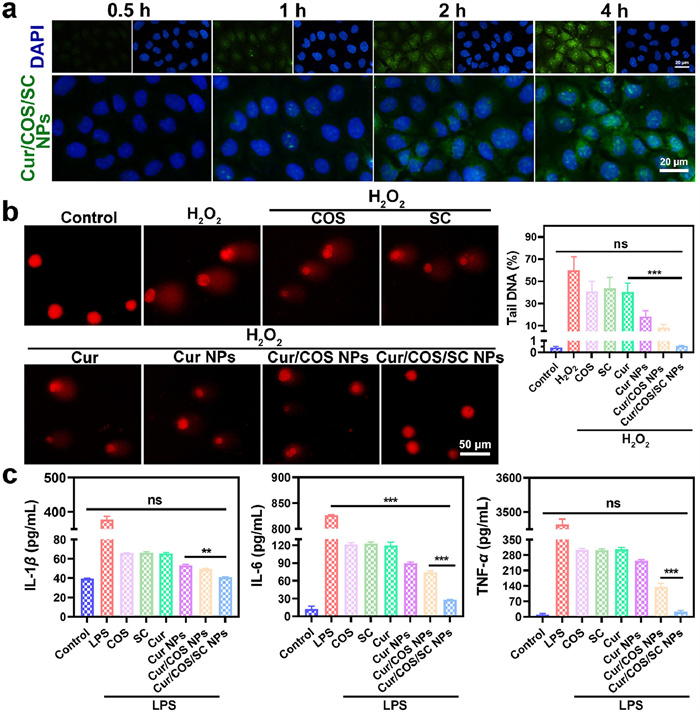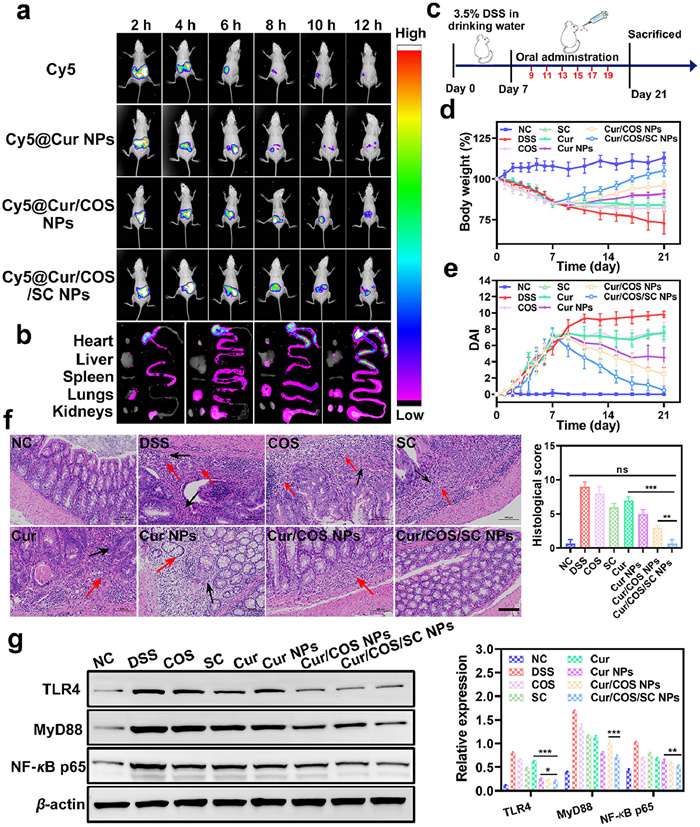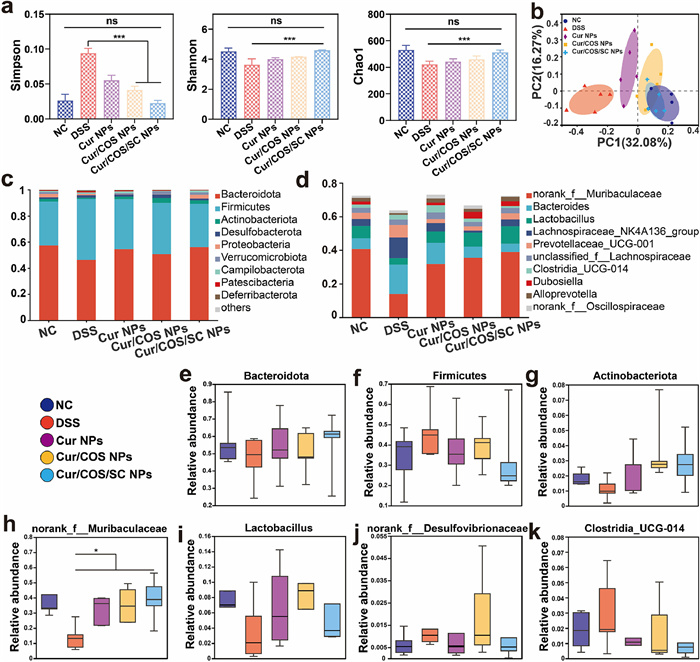-
[1]
A.T. Rahman, J. Shin, C.-H. Whang, et al., ACS Nano 17 (2023) 10996–11013.
doi: 10.1021/acsnano.3c03252
-
[2]
N.G. Kotla, Y. Rochev, Trends Mol. Med. 29 (2023) 241–253.
-
[3]
C. Yu, D. Wang, Z. Yang, T. Wang, Int. J. Mol. Sci. 23 (2022) 6939.
doi: 10.3390/ijms23136939
-
[4]
K. Rajamaki, A. Taira, R. Katainen, et al., Gastroenterol. 161 (2021) 592–607.
-
[5]
L. Liang, R. Lin, Y. Xie, et al., Int. J. Biol. Sci. 17 (2021) 2548–2560.
doi: 10.7150/ijbs.58671
-
[6]
J.F. Colombel, P. Rutgeerts, W. Reinisch, et al., Gastroenterol. 141 (2011) 1194–1201.
-
[7]
H.S. Sardo, F. Saremnejad, S. Bagheri, et al., Int. J. Pharm. 558 (2019) 367–379.
-
[8]
H. Liu, Z. Cai, F. Wang, et al., Adv. Sci. 8 (2021) 2101619.
-
[9]
D. Dehaini, R.H. Fang, L. Zhang, Bioeng. Transl. Med. 1 (2016) 30–46.
doi: 10.1002/btm2.10004
-
[10]
J. Wang, H. Pan, J. Li, et al., Chin. Chem. Lett. 34 (2023) 107828.
-
[11]
E. Wang, R. Han, M. Wu, et al., Chin. Chem. Lett. 35 (2024) 108361.
-
[12]
Y. Xu, N. Shrestha, V. Preat, A. Beloqui, J. Control. Release 322 (2020) 486–508.
-
[13]
A.M. dos Santos, S.G. Carvalho, A.B. Meneguin, et al., J. Control. Release 334 (2021) 353–366.
-
[14]
S. Davoodi, E. Foley, Front. Immunol. 10 (2020) 3128.
-
[15]
X. Zhu, K. Zhang, X. Teng, et al., Chem 9 (2023) 1094–1117.
-
[16]
H. Gou, H. Su, D. Liu, et al., Gastroenterology 165 (2023) 1404–1419.
-
[17]
R. Wu, R. Xiong, Y. Li, J. Chen, R. Yan, J. Autoimmun. 141 (2023) 103062.
-
[18]
J. Ni, G.D. Wu, L. Albenberg, V.T. Tomov, Nat. Rev. Gastroenterol. Hepatol. 14 (2017) 573–584.
doi: 10.1038/nrgastro.2017.88
-
[19]
M. Pesce, L. Seguella, A. Del Re, et al., Int. J. Mol. Sci. 23 (2022) 5466.
doi: 10.3390/ijms23105466
-
[20]
H. Luo, G. Cao, C. Luo, et al., Pharmacol. Res. 178 (2022) 106146.
-
[21]
Q. Song, H. Zhao, C. Zheng, et al., Adv. Funct. Mater. 31 (2021) 2104994.
-
[22]
Q. Song, C. Zheng, J. Jia, et al., Adv. Mater. 31 (2019) 1903793.
-
[23]
G. Christie, P. Setlow, Cell. Signalling. 74 (2020) 1093793.
-
[24]
J. Yin, L. Wei, N. Wang, X. Li, M. Miao, J. Ethnopharmacol. 289 (2022) 115041.
-
[25]
S.S. Kesharwani, R. Ahmad, M.A. Bakkari, et al., J. Controlled Release. 290 (2018) 165–179.
-
[26]
J.D. Lewis, M.T. Abreu, Gastroenterol. 152 (2017) 398–414.
-
[27]
J. Zhang, S. Li, F. -F. An, et al., Nanoscale. 7 (2015) 13503–13510.
-
[28]
Y. Wang, Y. Li, L. He, et al., Colloids Surf. B: Biointerfaces 203 (2021) 111756.
-
[29]
W. Xia, P. Liu, J. Zhang, J. Chen, Food Hydrocoll. 25 (2011) 170–179.
-
[30]
B. Zhu, H. He, D. Guo, M. Zhao, T. Hou, Food Hydrocoll. 102 (2020) 105567.
-
[31]
X. Wei, L. Yu, C. Zhang, et al., Carbohydr. Polym. 299 (2023) 120156.
-
[32]
Y. Wang, J. Lin, Z. Cheng, et al., Oxid. Med. Cell. Longevity. 2022 (2022) 5462390.
-
[33]
S. Zhao, Y. Li, Q. Liu, et al., Adv. Funct. Mater. 30 (2020) 2004692.
-
[34]
K. Wei, F. Gong, J. Wu, et al., ACS Nano 17 (2023) 21539–21552.
doi: 10.1021/acsnano.3c06551
-
[35]
X.Q. Sang, W.J. Yan, X.F. Qin, et al., Chin. J. Anal. Chem. 51 (2023) 100194.
-
[36]
E. Ricca, S.M. Cutting, J. Nanobiotechnol. 1 (2003) 6.
-
[37]
C.T. Nordgard, K.I. Draget, Adv. Drug Deliv. Rev. 124 (2018) 175–183.
-
[38]
C. Menzel, A. Bernkop-Schnuerch, Adv. Drug Deliv. Rev. 124 (2018) 164–174.
-
[39]
N.P. Gabrielson, H. Lu, L. Yin, et al., Angew. Chem. Int. Ed. 51 (2012) 1143–1147.
doi: 10.1002/anie.201104262
-
[40]
H.X. Wang, Z. Song, Y.H. Lao, et al., Proc. Nat. Acad. Sci. 115 (2018) 4903–4908.
doi: 10.1073/pnas.1712963115
-
[41]
F.J. Enguita, L.O. Martins, A.O. Henriques, M.A. Carrondo, J. Biol. Chem. 278 (2003) 19416–19425.
-
[42]
P. Moller, D.M. Jensen, D.V. Christophersen, et al., Environ. Mol. Mutagen. 56 (2015) 97–110.
doi: 10.1002/em.21899
-
[43]
W.T. Kuo, M.A. Odenwald, J.R. Turner, L. Zuo, Ann. NY Acad. Sci. 1514 (2022) 21–33.
doi: 10.1111/nyas.14798
-
[44]
X. Mao, R. Sun, Q. Wang, et al., Front. Immunol. 12 (2022) 817583.
-
[45]
N. Ma, D. Ma, X. Liu, et al., Environ. Int. 175 (2023) 107949.
-
[46]
Y.C. Lu, W.C. Yeh, P.S. Ohashi, Cytokine. 42 (2008) 145–151.
-
[47]
A. Lavelle, H. Sokol, Nat. Rev. Gastro. Hepat. 17 (2020) 223–237.
doi: 10.1038/s41575-019-0258-z
-
[48]
B. Chassaing, A.T. Gewirtz, Toxicol. Pathol. 42 (2014) 49–53.
doi: 10.1177/0192623313508481
-
[49]
H. Sokol, S. Jegou, C. McQuitty, et al., Gut Microbes 9 (2018) 55–60.
-
[50]
L. Mei, J. Guo, R. He, et al., Small 19 (2023) 202301129.
-
[51]
B. Zhang, X. Fan, H. Du, et al., ACS Nano 17 (2023) 6081–6094.
doi: 10.1021/acsnano.3c01005
-
[52]
C. Binda, L.R. Lopetuso, G. Rizzatti, et al., Digest. Liver Dis. 50 (2018) 421–428.
-
[53]
T. Magrone, E. Jirillo, Immun. Ageing 10 (2013) 31.
-
[54]
X. Zhong, Y. Zhao, L. Huang, et al., Front. Microbiol. 14 (2023) 1140498.
-
[55]
Y. Wang, X. Nan, Y. Zhao, et al., Microbiol. Spectrum. 9 (2021) e00105–21.

 Login In
Login In







 DownLoad:
DownLoad:



